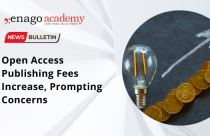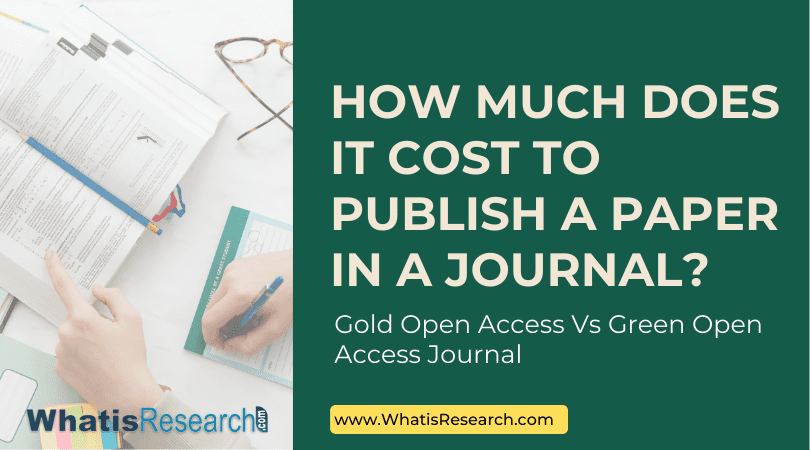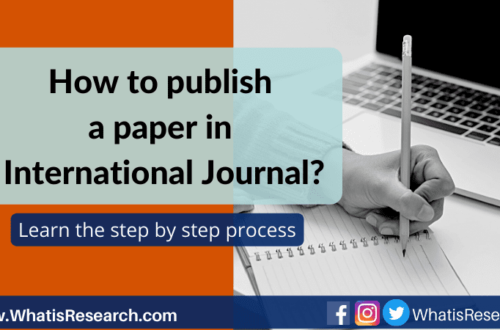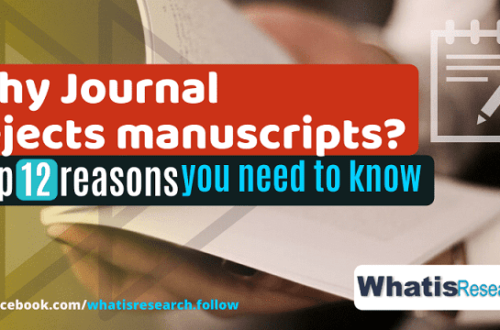PublishingState.com


Understanding Journal Publication Fees: A Compact Guide
Table of contents, introduction to journal publishing, traditional publishing model, open access publishing model, impact on journal publication fees, peer review and editorial services, system management and digital hosting, maintaining quality and integrity, detailed breakdown of typical journal publishing fees, why some publishers charge high journal publication fees to publish, understanding open access journal publication fees, the pros and cons of open access fees, tips for authors to afford publication costs, balance between journal publication fees and prestige, call-to-action.
As someone who works on academic publishing, I often get a popular question, especially from young and aspiring researchers:
How much do I pay for the journal publication fees to publish my paper in your journal?
The article discusses the cost of publishing in an academic journal, delving into journal publishing models, revenue generation methods of publishers, and why some publishers charge high journal publication fees that deter authors from submitting.

Academic journal publishing is an essential part of the scholarly communication process. Its primary purpose is disseminating research findings, ideas, and theories to the global community of scholars, researchers, and practitioners.
By publishing their work in academic journals, authors contribute to the existing body of knowledge in their respective fields, stimulate further research, and advance human understanding.
But this important endeavor comes with a cost.
A publisher running a scholarly journal needs to cover operation costs. These costs cover system maintenance (manuscript management system), archiving host, editorial services, editorial remuneration, salary, bills, etc. Institutional academic publishers may get (some) funding, whereas commercial publishers need to fork money to cover the overhead.
The total cost can vary significantly between journals and depending on the chosen publishing model. Where the journal publishing fees are concerned, this financial aspect of journal publishing can influence an author’s decision on where to submit their work.
When considering journal publication fees and cost, it’s crucial to understand its importance, purpose, and associated costs. These costs enable journals to maintain high editorial standards, manage the peer review process, and ensure the work’s accessibility to readers worldwide.
While these costs may sometimes seem high, they’re integral to ensuring the quality, integrity, and accessibility of published research. Therefore, it’s essential for authors to factor them into their publishing decisions.
Understanding Journal Publishing Models
Delving into the world of journal publishing, you’ll encounter two primary models: traditional and open access. Remember that we are probably talking about more than 30,000 academic journals worldwide.
Each journal model operates differently, and understanding these differences is key as they significantly impact the costs associated with publishing.
The traditional publishing model, which has existed for centuries, operates on a subscription-based system. In this setup, readers or their institutions pay a fee (subscription) to access the content of the journals. The subscription mechanism has been the primary publishing model, but the number continues declining as many have adopted the open access model.
The revenue from these subscriptions covers production costs, peer review management, and distribution. Authors may or may not be charged to publish in these types of journals, but even when they are, the fees are generally lower than those of open access journals.
On the other hand, the open access model is a more recent development in the realm of academic publishing. This model allows anyone to read and download the articles for free, promoting wider dissemination of research.
However, there is a catch.
The authors or their institutions typically bear the publishing costs under this model. These fees, known as Article Processing Charges (APCs), cover the same services as traditional publishing – editorial work, peer review management, and distribution. APCs can vary widely, with some journals charging hundreds of dollars while others may charge several thousand.
In between the traditional subscription and open access models, there is the hybrid model, in which a journal offers both options.
The choice between traditional and open access models fundamentally influences the cost of publishing. As mentioned earlier, traditional publishing often incurs fewer upfront costs for the authors as reader subscriptions primarily cover the expenses.
Open access, conversely, shifts the financial burden onto the authors, necessitating higher APCs. However, it’s important to note that the higher cost of open access publishing is offset by its benefit of wider accessibility and potential for greater citation rates.
Ultimately, the decision of where to publish—and thus how much to pay—lies in the hands of researchers and their institutions. It’s a balancing act between affordability, academic recognition, and the desire for research to reach as broad an audience as possible.
Who Do Publishers Incur Journal Publication Fees?
The cost of publishing a research paper often raises eyebrows, especially among first-time authors. You might ask, “Why do I have to pay to share my hard-earned knowledge with others?” The answer lies in the intricate process that your manuscript goes through before it gets published. This process involves several quality control steps, all meticulously managed by the journal.
The cornerstone of academic publishing is the peer review process. It ensures that the research being circulated is high quality, robust, and contributes to the existing body of knowledge. Organizing a thorough, unbiased peer review is no small task. Journals must engage experts in the relevant field, often multiple, and manage their feedback efficiently to maintain the integrity of the review process.
In addition to peer review, there are other editorial services like copy-editing, proofreading and typesetting. These processes help refine the language, correct errors, and format the manuscript as per the journal’s guidelines. The outcome is a polished, professional-looking article that reflects well on the author and the journal.
Beyond editorial work , journals also shoulder the responsibility of maintaining a stable digital platform for hosting published articles. This includes developing and updating the online submission system, managing the website, and ensuring 24/7 access to their digital archives. These technical aspects require significant ongoing investment.
Furthermore, journals must stay current with the latest advances in digital publishing. This means adopting new technologies, enhancing accessibility, and improving user experience, all involving additional costs.
All these processes collectively play a pivotal role in maintaining the quality and integrity of the published work. By paying the publishing fee, you’re essentially contributing to this meticulous system designed to uphold the highest standards of academic integrity. It’s an assurance that experts are scrutinizing your work, presented professionally, and hosted on a reliable platform.
While the cost may seem daunting initially, consider it an investment towards ensuring that your research reaches your community in the best possible manner. It’s about valuing the rigorous process that safeguards the reputation of scholarly research.
Decoding the Journal Publication Fee Structure
To understand why journal publication fees can be expensive, we need to break down the typical costs associated with it. It’s not just about printing on paper or hosting on a digital platform – several factors contribute to these fees.
Firstly, there is the cost of handling and processing the manuscript. This involves initial assessment, coordinating the peer review process, and editing the manuscript to meet the journal’s guidelines. These processes require skilled professionals who must be paid for their time and expertise.
A reputable journal also uses a reliable manuscript management system from a third party. This also incurs additional costs. When I was handling the journal department, maintaining the manuscript management system incurred one of the highest costs.
Secondly, there is the cost of production. After a manuscript is accepted for publication, it must be formatted, proofread, and typeset. Images and graphics might need to be enhanced, and sometimes videos or other multimedia elements must be incorporated into the digital version of the article. Again, this requires professional expertise.
Thirdly, there’s the cost of dissemination and archiving. The final article must be hosted on a website, distributed to various databases, and often printed and shipped to libraries or individual subscribers. Plus, the published article needs to be stored and made accessible indefinitely, which also incurs ongoing costs.
The fees charged by different journals can vary widely. Some journals charge high publishing fees because they offer more services or higher quality services. For example, they might employ more experienced editors, have more rigorous peer review processes, or provide more extensive marketing and distribution of published articles.
In addition, some journals specialize in fields where large grants typically fund research, and therefore authors can afford to pay higher publishing fees. Other journals target early-career researchers or researchers from low-income countries and try to keep fees as low as possible.
Furthermore, the prestige of a journal can also play a role in its pricing. Publishing in a highly respected journal can significantly increase a researcher’s reputation and career prospects so that these journals can afford higher fees.
It’s also worth noting that open access journals generally charge higher journal publishing fees than traditional subscription-based journals, as they don’t generate revenue from subscriptions or paywalls. We’ll explore this further in the next section.
Open Access Journal Fees
Transitioning from traditional publishing models, let’s delve into the realm of open access journals. These journals are freely accessible online to everyone without the need for subscription fees or paywalls. However, this doesn’t mean they’re free to publish – there are still costs associated with their operation.
The fees or the amount required to publish a paper in open access journals vary widely. Typically, these fees, known as Article Processing Charges (APCs), range from $100-$900 (lower tier), $1000-$5,000 (mid-tier) and over $6,000 (higher tier).
APCs cover the costs of peer review, editorial work, online hosting, and archiving. Additionally, some journals levy charges for supplementary materials, figures, or color pages. It’s important for authors to thoroughly investigate these charges before submitting them to an open access journal.
Despite the costs, there are certain advantages to publishing in open access journals. For one, your research becomes immediately available to readers worldwide, increasing its visibility and potential impact.
This can particularly appeal to researchers working on time-sensitive or highly relevant topics. Moreover, some studies have suggested that open access articles are more likely to be cited, which could boost your academic profile.
However, the high APCs can present a significant barrier to some researchers, particularly those without institutional support or access to funding. This raises concerns about the accessibility and equity of open access publishing.
Furthermore, there’s a risk of predatory journals exploiting the open access model, charging high fees without providing proper peer review or editorial services. In recent times, the rise of predatory journals has been unprecedented, causing worries.
Considering these benefits and drawbacks, the decision to publish in an open access journal ultimately depends on your circumstances and research goals. When making this choice, it’s crucial to consider the immediate financial cost and the potential long-term impacts on your research visibility and reputation.
Strategies to Manage Journal Publication Fees
As an academic researcher, you might be troubled by the steep costs of publishing your findings in scholarly journals. But don’t worry. There are several ways through which these costs can be managed effectively. This section will provide practical tips and advice to help you navigate the financial aspects of journal publishing.
One of the most common ways to manage journal publication fees is through grants. Several funding bodies, institutions, and even some governments offer grants specifically designed to cover the costs of research publication. It’s worth investing time to research these opportunities and apply for them.
Besides grants, many publishers offer waivers or discounts on journal publication fees. These waivers are typically need-based and may be offered to researchers from low-income countries or those experiencing financial hardship. It’s always a good idea to check the journal’s policy on fee waivers before submission.
Finally, while it might not sound like the most glamorous option, choosing lower-cost journals for publication is also a viable strategy. Many reputable publishers charge reasonable journal publication fees without compromising the quality of peer review or exposure.
While managing costs is crucial, it’s equally important not to let financial considerations entirely dictate your choice of publication venue.
Remember, the main goal of publishing research is to contribute to your field and boost your academic reputation. Hence, the prestige of the journal should also be taken into account.
Publishing in a prestigious journal ensures a wider audience for your work and adds weight to your academic portfolio. Therefore, it’s essential to strike a balance between cost and prestige. If a prestigious academic publisher charges higher journal publication fees, consider it an investment in your academic career and look for ways to secure funding or waivers.
In the end, remember that the best strategy is often balanced. Consider all factors—including cost, prestige, the journal’s audience, and its relevance to your work—when deciding where to publish your research.
Conclusion: Making Informed Decisions about Journal Publication Fees
As we reach the conclusion of this enlightening journey through the intricacies of journal publication fees, let’s recap the essential insights.
First, we delved into the world of journal publishing models, distinguishing between traditional and open access models, both of which impact the journal publication fees differently.
We also explored why paying for publishing in a journal is necessary, shedding light on various aspects managed by journals, such as peer review, editorial services, system management, and digital hosting.
These services play an instrumental role in maintaining the quality and integrity of published work, ensuring that the scientific community continues to operate on a foundation of rigorous, reliable research.
A comprehensive breakdown of typical journal publication fees was delivered, elucidating why some journals charge higher fees for their publishing services.
Open access journal fees and their unique benefits and drawbacks were also discussed, providing a more nuanced understanding of this publishing model’s financial implications.
Importantly, we also shared practical strategies to manage journal publication fees. Tips ranged from acquiring grants and waivers to selecting lower-cost journals without compromising the prestige associated with your chosen publication. Balancing these factors effectively can alleviate the financial burden while preserving your academic reputation.
We encourage you, as authors, to carefully weigh all these factors when deciding where to publish your research. Remember, knowledge is power. The more informed you are about the nuances of journal publishing, the better equipped you’ll be to make decisions that align with your financial capabilities and academic goals.
Whether you go down the traditional or open access route, aim to balance the cost and the journal’s prestige. And remember, many resources can help you manage these journal publication fees without sacrificing the quality and reach of your academic work. Your research deserves to be shared with the world, but it shouldn’t come at an unmanageable cost.
Keep exploring, keep questioning, and keep publishing. Your contribution to the world of knowledge is invaluable.
3 thoughts on “Understanding Journal Publication Fees: A Compact Guide”
- Pingback: Is Academic Publishing a Greedy Industry?
- Pingback: What are Article Processing Charges in Journal Publishing?
- Pingback: Academic Publishing: 9 Key Things You Should Know
Leave a comment Cancel reply

Home → Get Published → How to Publish a Research Paper: A Step-by-Step Guide
How to Publish a Research Paper: A Step-by-Step Guide
Jordan Kruszynski
- January 4, 2024

You’re in academia.
You’re going steady.
Your research is going well and you begin to wonder: ‘ How exactly do I get a research paper published?’
If this is the question on your lips, then this step-by-step guide is the one for you. We’ll be walking you through the whole process of how to publish a research paper.
Publishing a research paper is a significant milestone for researchers and academics, as it allows you to share your findings, contribute to your field of study, and start to gain serious recognition within the wider academic community. So, want to know how to publish a research paper? By following our guide, you’ll get a firm grasp of the steps involved in this process, giving you the best chance of successfully navigating the publishing process and getting your work out there.
Understanding the Publishing Process
To begin, it’s crucial to understand that getting a research paper published is a multi-step process. From beginning to end, it could take as little as 2 months before you see your paper nestled in the pages of your chosen journal. On the other hand, it could take as long as a year .
Below, we set out the steps before going into more detail on each one. Getting a feel for these steps will help you to visualise what lies ahead, and prepare yourself for each of them in turn. It’s important to remember that you won’t actually have control over every step – in fact, some of them will be decided by people you’ll probably never meet. However, knowing which parts of the process are yours to decide will allow you to adjust your approach and attitude accordingly.
Each of the following stages will play a vital role in the eventual publication of your paper:
- Preparing Your Research Paper
- Finding the Right Journal
- Crafting a Strong Manuscript
- Navigating the Peer-Review Process
- Submitting Your Paper
- Dealing with Rejections and Revising Your Paper
Step 1: Preparing Your Research Paper
It all starts here. The quality and content of your research paper is of fundamental importance if you want to get it published. This step will be different for every researcher depending on the nature of your research, but if you haven’t yet settled on a topic, then consider the following advice:
- Choose an interesting and relevant topic that aligns with current trends in your field. If your research touches on the passions and concerns of your academic peers or wider society, it may be more likely to capture attention and get published successfully.
- Conduct a comprehensive literature review (link to lit. review article once it’s published) to identify the state of existing research and any knowledge gaps within it. Aiming to fill a clear gap in the knowledge of your field is a great way to increase the practicality of your research and improve its chances of getting published.
- Structure your paper in a clear and organised manner, including all the necessary sections such as title, abstract, introduction (link to the ‘how to write a research paper intro’ article once it’s published) , methodology, results, discussion, and conclusion.
- Adhere to the formatting guidelines provided by your target journal to ensure that your paper is accepted as viable for publishing. More on this in the next section…
Step 2: Finding the Right Journal
Understanding how to publish a research paper involves selecting the appropriate journal for your work. This step is critical for successful publication, and you should take several factors into account when deciding which journal to apply for:
- Conduct thorough research to identify journals that specialise in your field of study and have published similar research. Naturally, if you submit a piece of research in molecular genetics to a journal that specialises in geology, you won’t be likely to get very far.
- Consider factors such as the journal’s scope, impact factor, and target audience. Today there is a wide array of journals to choose from, including traditional and respected print journals, as well as numerous online, open-access endeavours. Some, like Nature , even straddle both worlds.
- Review the submission guidelines provided by the journal and ensure your paper meets all the formatting requirements and word limits. This step is key. Nature, for example, offers a highly informative series of pages that tells you everything you need to know in order to satisfy their formatting guidelines (plus more on the whole submission process).
- Note that these guidelines can differ dramatically from journal to journal, and details really do matter. You might submit an outstanding piece of research, but if it includes, for example, images in the wrong size or format, this could mean a lengthy delay to getting it published. If you get everything right first time, you’ll save yourself a lot of time and trouble, as well as strengthen your publishing chances in the first place.
Step 3: Crafting a Strong Manuscript
Crafting a strong manuscript is crucial to impress journal editors and reviewers. Look at your paper as a complete package, and ensure that all the sections tie together to deliver your findings with clarity and precision.
- Begin by creating a clear and concise title that accurately reflects the content of your paper.
- Compose an informative abstract that summarises the purpose, methodology, results, and significance of your study.
- Craft an engaging introduction (link to the research paper introduction article) that draws your reader in.
- Develop a well-structured methodology section, presenting your results effectively using tables and figures.
- Write a compelling discussion and conclusion that emphasise the significance of your findings.
Step 4: Navigating the Peer-Review Process
Once you submit your research paper to a journal, it undergoes a rigorous peer-review process to ensure its quality and validity. In peer-review, experts in your field assess your research and provide feedback and suggestions for improvement, ultimately determining whether your paper is eligible for publishing or not. You are likely to encounter several models of peer-review, based on which party – author, reviewer, or both – remains anonymous throughout the process.
When your paper undergoes the peer-review process, be prepared for constructive criticism and address the comments you receive from your reviewer thoughtfully, providing clear and concise responses to their concerns or suggestions. These could make all the difference when it comes to making your next submission.
The peer-review process can seem like a closed book at times. Check out our discussion of the issue with philosopher and academic Amna Whiston in The Research Beat podcast!
Step 5: Submitting Your Paper
As we’ve already pointed out, one of the key elements in how to publish a research paper is ensuring that you meticulously follow the journal’s submission guidelines. Strive to comply with all formatting requirements, including citation styles, font, margins, and reference structure.
Before the final submission, thoroughly proofread your paper for errors, including grammar, spelling, and any inconsistencies in your data or analysis. At this stage, consider seeking feedback from colleagues or mentors to further improve the quality of your paper.
Step 6: Dealing with Rejections and Revising Your Paper
Rejection is a common part of the publishing process, but it shouldn’t discourage you. Analyse reviewer comments objectively and focus on the constructive feedback provided. Make necessary revisions and improvements to your paper to address the concerns raised by reviewers. If needed, consider submitting your paper to a different journal that is a better fit for your research.
For more tips on how to publish your paper out there, check out this thread by Dr. Asad Naveed ( @dr_asadnaveed ) – and if you need a refresher on the basics of how to publish under the Open Access model, watch this 5-minute video from Audemic Academy !
Final Thoughts
Successfully understanding how to publish a research paper requires dedication, attention to detail, and a systematic approach. By following the advice in our guide, you can increase your chances of navigating the publishing process effectively and achieving your goal of publication.
Remember, the journey may involve revisions, peer feedback, and potential rejections, but each step is an opportunity for growth and improvement. Stay persistent, maintain a positive mindset, and continue to refine your research paper until it reaches the standards of your target journal. Your contribution to your wider discipline through published research will not only advance your career, but also add to the growing body of collective knowledge in your field. Embrace the challenges and rewards that come with the publication process, and may your research paper make a significant impact in your area of study!
Looking for inspiration for your next big paper? Head to Audemic , where you can organise and listen to all the best and latest research in your field!
Keep striving, researchers! ✨
Table of Contents
Related articles.

You’re in academia. You’re going steady. Your research is going well and you begin to wonder: ‘How exactly do I get a

Behind the Scenes: What Does a Research Assistant Do?
Have you ever wondered what goes on behind the scenes in a research lab? Does it involve acting out the whims of

How to Write a Research Paper Introduction: Hook, Line, and Sinker
Want to know how to write a research paper introduction that dazzles? Struggling to hook your reader in with your opening sentences?

Blog Podcast
Privacy policy Terms of service
Subscribe to our newsletter!
Discover more from Audemic: Access any academic research via audio
Subscribe now to keep reading and get access to the full archive.
Type your email…
Continue reading

What Is the Real Cost of Scientific Publishing?
After spending years researching, scientific researchers publish their findings to share them with the larger scientific community. It is standard procedure that peer-reviewed scientific journals charge a significant publication fee for publishing a paper , especially traditional print journals. The cost of publishing can be very high, depending on the journal selected. Recently, these publication fees have come into question, with the scientific community wondering what the real cost to publishers is.
What Costs are Involved in Publishing?
Scientific publishing costs vary from journal to journal. Most journals are unwilling to disclose their publishing costs, so estimations are typically done based upon general industry statistics and revenues. There are costs involved in publishing an article , including the staff, distribution costs, and printing fees. There is also a significant amount of work done behind the scenes that takes a paper from submission to publication. Publishers often have to edit, proofread , check for plagiarism, and send the papers for peer review , all which increase the cost of publishing.
How Much Does it Cost to Publish?
Publishing costs for journals can be high. According to one study that analyzed industry data from the consulting firm Outsell, the typical profit margins for the academic publishing industry are around 20 to 30 percent. Estimating the final cost of publication per paper based upon revenue generated and the total number of published articles, they estimate that the average cost to publish an article is around $3500 to $4000. This estimate is most likely very high, especially for open access journals that typically only publish digital copies. The cost per paper in these journals could be as low as a few hundred dollars per article.
Who Pays to Publish in Journals?
A large percentage of the cost of publishing a research paper falls upon the researchers. Most journals charge a significant fee to those submitting a paper, sometimes in the thousands of dollars. The paper’s author might have to pay these fees, although sometimes his or her university or institution has a subscription fee or otherwise covers the cost of publishing. Some journals are able to provide a much lower fee for publication because the government, a university, or a society subsidizes them.
Journals with a higher publication fee defend their costs by saying they put more effort into reviewing and editing each article, and are more selective about the articles published. Researchers continue to publish in these journals because they provide a greater prestige to the author due to their long-standing, esteemed reputation.
The Future of Journal Costs
Until there is more clarity on exactly how much each publishing house spends on publishing each article, the research community will never know what the real cost of publication is. There is pressure to lower the amount charged to authors to have an article published, and some journals are making it easier for researchers to publish their work . However, it will be years before the most well-respected and often most expensive journals begin to lower their fees, both for submitting and reading articles, making it easier for the scientific community to publish, read, and share information on the latest findings.
Rate this article Cancel Reply
Your email address will not be published.

Enago Academy's Most Popular Articles

- Industry News
- Trending Now
Open Access Publishing Fees Skyrocket, Invites Concerns on Equitable Knowledge Dissemination
Open access (OA) publishing has gained momentum over the past few decades. It was reported…

- Free Resources
A Comprehensive Global Examination of Open Access Awareness, Attitudes, and Funding in Scholarly Publishing
The global proliferation of open-access (OA) publishing stands as a pivotal focus for researchers, institutions,…

- Thought Leadership
Knowledge Without Walls: Enago’s comprehensive global survey report on open-access publishing
In the ever-evolving landscape of scholarly communication, the global expansion of open-access (OA) publishing has…

- Publishing Research
- Submitting Manuscripts
Publishers Reimagining Open Access Funding and Publishing: APCs finally being replaced with innovative models
Recent years have seen a dynamic transformation in the academic publishing landscape, driven by the…

- Diversity and Inclusion
Democratizing Science: The power of open access in fostering diversity and inclusivity
Open access encompasses a set of principles and practices with the overarching goal of making…
Open Access Publishing Fees Skyrocket, Invites Concerns on Equitable Knowledge…
Balancing Between Scalability and Openness: An interview with Ginny Hendricks
Author Perspectives on Open Access: Fostering community and equitable knowledge…
Open Access Week 2023 With Enago: Embracing “Community over Commercialization”

Sign-up to read more
Subscribe for free to get unrestricted access to all our resources on research writing and academic publishing including:
- 2000+ blog articles
- 50+ Webinars
- 10+ Expert podcasts
- 50+ Infographics
- 10+ Checklists
- Research Guides
We hate spam too. We promise to protect your privacy and never spam you.
I am looking for Editing/ Proofreading services for my manuscript Tentative date of next journal submission:

As a researcher, what do you consider most when choosing an image manipulation detector?
Understanding Submission and Publication Fees
- Research Process
- Peer Review
A number of journals charge fees to authors of one kind or another. Pre-publication fees, such as a submission fee or membership fee, are less common. Researchers are more likely to encounter post-publications fees, such as an article processing charge or page fee.
Updated on January 1, 2012

When trying to target the right journal for publication of your manuscript, it is easy to get overwhelmed by the diversity of not only journals but also potential author fees. What are all of these types of fees? Which types of journals generally charge them? When? Why?
Before addressing this slew of questions, it is important to note a common oversimplification: that traditional journals are solely based on a reader-pays model, in which institutional libraries typically pay for access to content, and that open access journals, supporting " unrestricted access and unrestricted reuse ,” are always based on an author-pays model (see our article on open access myths for more information). In other words, as an author, you may have to pay for submission to and/or publication in a subscription-based journal and may not have to do so for an open access one. The latter concept is made possible by alternative sources of revenue that cover the costs of the editorial, peer review, and publication processes, such as paywalled premium content, advertising, or subsidy by a journal's affiliated foundation or society.
Note also that for both traditional and open access publications that do entail so-called “author” charges, you may not have to pay these fees in full because of discounts related to institutional membership programs, your own society membership, or waivers of service (such as if in-house copyediting is not needed). Moreover, you may not have to pay full or even discounted fees due to waivers based on either financial hardship or your country of origin's economic status or due to coverage by your institution, department, or funder/grant; in fact, for open access publication, only 5% to 12% of fees are ever paid using personal funds.
Here, we summarize a few of the most common fees associated with manuscript submission and publication, with a focus on the pre- and post-acceptance charges that may be most relevant to you as an author. Note that all quoted price ranges are rough estimates based on a brief survey, so please check specific journals' and publishers' websites for more accurate information. These sites (e.g., PLOS and BioMed Central ) should provide up-to-date information on journals' specific fee types, discounts, and waivers. Your institution and/or funder may also be able to provide more in-depth explanations about open access mandates, if any, and cost coverage.
Pre-acceptance fees
Submission fees. Both subscription-based and open access journals may charge a fee (typically $50-125) at the time of manuscript submission to help to fund editorial and peer review administration. From an author's standpoint, these fees might deter submission due to the existence of many journals without such charges. However, submission fees thus present the advantage of decreasing competition for review and acceptance, potentially enhancing publication speed . The effect on journal quality, and therefore potentially on impact, may also be positive: the quality of submissions may increase, as only authors with confidence that they are choosing the right journal will be willing to pay a submission fee. Interestingly, it has also been posited that submission fees can increase authors' concern about the quality of peer review and the reasoning behind manuscript rejection, potentially motivating greater accountability on the part of journals.
Membership fees. The open access journal PeerJ is unique in charging a one-time membership fee ($100-350) that covers the editorial process and peer review, as well as the possible publication, of one, two, or a limitless number of manuscripts per year (depending on the level of membership). Each author on a manuscript, up to 12 authors, must pay the fee and a must contribute to the PeerJ community yearly, such as by participating in peer review. It is also possible to pay for membership after acceptance of a manuscript, but this increases the cost. Advantages of this membership approach include relatively rapid publication and avoidance of repeatedly paying pre- and post-acceptance fees. [Editor's note: PeerJ now offers a per-article price , as well.]
Post-acceptance fees
These fees either stand alone or are charged subsequent to a submission fee.
Page/color printing charges. To cover the cost of printing, and particularly color printing, certain traditional journals charge per page (often $100-250 each) and/or per color figure (about $150-1,000 each). In rare cases, supplementary materials may also incur a flat charge or a charge per item or page, with fees usually ranging from $150-500.
Publication fees. These fees, charged by certain open access journals post-acceptance, are also known as author publishing charges or article processing charges (APCs) and range from $8-3,900. APCs may be driven down by submission fees, particularly among open access journals with high rejection rates. In contrast to post-acceptance charges by traditional journals, these APCs are more often flat fees because they primarily fund peer review and online dissemination, which are length independent. In rare cases, post-acceptance, page/color-independent fees may also be billed by traditional journals (e.g., the Journal of Clinical Investigation ) without unrestricted access and/or reuse provisions. Generally, these fees provide both retrospective and prospective coverage, including of peer review management by the editorial staff or board (i.e., identifying and following up with peer reviewers), manuscript preparation (e.g., copyediting), journal production (e.g., layout), open access online publication and hosting, indexing (e.g., in PubMed), and archiving.
Be aware that “predatory” journals may take advantage of the APC-based model to receive payment in return for minimal peer review and processing, so be sure to look for warning signs and consider checking whether your target journal is listed by the Directory of Open Access Journals . A truly open access journal should also meet the two-fold requirement defined above by PLOS : “unrestricted access and unrestricted reuse,” meaning that an open access article must not only be freely accessible to readers but also freely available for copying, distribution, and derivative work, as long as the original author is acknowledged. In particular, open access articles are often associated with a CC-BY license, although certain journals may not support reuse/derivation.
Regarding the value added by submitting to APC-charging journals, a weak correlation between citation-based impact and APCs has been found for open access journals, implying that higher fees are necessitated by higher rejection rates, which in turn imply greater selectivity and prestige. However, note that this analysis did not take submission fees into account.
Conclusions
In sum, when choosing a journal for manuscript submission, the array of pre- and post-acceptance fees should not be an immediate deterrent, especially if the journal's scope and content are a good fit for your work, because of both potential fee assistance and added value. You should thus focus on asking yourself a more personalized question beyond what, who, when, and why: is the journal truly the right fit for my specific research and my own publication goals?

Michaela Panter, PhD
See our "Privacy Policy"
Secure funding for your submission fees
Use our Grant services to ensure you have the funds for all of your research needs.
- Search Search
- CN (Chinese)
- DE (German)
- ES (Spanish)
- FR (Français)
- JP (Japanese)
- Open Research
- Booksellers
- Peer Reviewers
- Springer Nature Group ↗
Publish an article
- Roles and responsibilities
- Signing your contract
- Writing your manuscript
- Submitting your manuscript
- Producing your book
- Promoting your book
- Submit your book idea
- Manuscript guidelines
- Book author services
- Publish a book
- Publish conference proceedings
Join thousands of researchers worldwide that have published their work in one of our 3,000+ Springer Nature journals.
Step-by-step guide to article publishing
1. Prepare your article
- Make sure you follow the submission guidelines for that journal. Search for a journal .
- Get permission to use any images.
- Check that your data is easy to reproduce.
- State clearly if you're reusing any data that has been used elsewhere.
- Follow our policies on plagiarism and ethics .
- Use our services to get help with English translation, scientific assessment and formatting. Find out what support you can get .
2. Write a cover letter
- Introduce your work in a 1-page letter, explaining the research you did, and why it's relevant.
3. Submit your manuscript
- Go to the journal homepage to start the process
- You can only submit 1 article at a time to each journal. Duplicate submissions will be rejected.
4. Technical check
- We'll make sure that your article follows the journal guidelines for formatting, ethics, plagiarism, contributors, and permissions.
5. Editor and peer review
- The journal editor will read your article and decide if it's ready for peer review.
- Most articles will be reviewed by 2 or more experts in the field.
- They may contact you with questions at this point.
6. Final decision
- If your article is accepted, you'll need to sign a publishing agreement.
- If your article is rejected, you can get help finding another journal from our transfer desk team .
- If your article is open access, you'll need to pay a fee.
- Fees for OA publishing differ across journals. See relevant journal page for more information.
- You may be able to get help covering that cost. See information on funding .
- We'll send you proofs to approve, then we'll publish your article.
- Track your impact by logging in to your account
Get tips on preparing your manuscript using our submission checklist .
Each publication follows a slightly different process, so check the journal's guidelines for more details
Open access vs subscription publishing
Each of our journals has its own policies, options, and fees for publishing.
Over 600 of our journals are fully open access. Others use a hybrid model, with readers paying to access some articles.
Publishing your article open access has a number of benefits:
- Free to access and download
- Reaches a wider global audience
- 1.6x more citations
- 6x more downloads
- 4.9 average Altmetric attention (vs 2.1 subscription)
It's free to publish your article in a subscription journal, but there are fees for publishing open access articles. You'll need to check the open access fees for the journal you choose.
Learn more about open access
Get help with funding.
Many organisations require you to publish your research open access. It's worth checking with your supervisor and colleagues to understand your organisation's approach.
Many funders and institutions will cover your open access publishing fees. To find out if your fees are covered, take a look at our funding agreements .
We also offer discounts for researchers in some geographical regions. See regions with reduced fees
Learn more about funding
Choose a journal.
We have 3,000+ journals to choose from, covering a wide range of topics. The best way to find a relevant journal is to search by keyword.
Once you've chosen a journal, check the submission guidelines to see the open access fees.
Search all journals
Get support.
We offer editing, translation, data presentation and formatting services to help you at each step.

Author support for publishing
Knowledge resources for scientists, author tutorials.
If you have a question about a specific journal, check the submission guidelines. If you still need help, contact us .
- Tools & Services
- Account Development
- Sales and account contacts
- Professional
- Press office
- Locations & Contact
We are a world leading research, educational and professional publisher. Visit our main website for more information.
- © 2024 Springer Nature
- General terms and conditions
- Your US State Privacy Rights
- Your Privacy Choices / Manage Cookies
- Accessibility
- Legal notice
- Help us to improve this site, send feedback.
Thank you for visiting nature.com. You are using a browser version with limited support for CSS. To obtain the best experience, we recommend you use a more up to date browser (or turn off compatibility mode in Internet Explorer). In the meantime, to ensure continued support, we are displaying the site without styles and JavaScript.
- View all journals
- Explore content
- About the journal
- Publish with us
- Sign up for alerts
Publishing options
Authors submitting primary research articles to Nature have the option of publishing their research using either:
1 – Traditional subscription publishing model – an article is submitted and is assessed by our editors. If suitable it will be put through Peer Review, and if successful (subject to amendments), will be eligible for publication. Published articles are made available to institutions and individuals who subscribe to Nature or who pay to read specific articles.
2 – Gold Open Access – same publishing process as above. The difference is that when an article is accepted for publication, the author/s or funder/s pay an Article Processing Charge (APC). The final version of the published article is then free to read for everyone. The APC to publish Gold Open Access in Nature is £8890.00/$12290.00/€10290.00.
Find out more about Open Access .
Articles that are published OA are freely available online, and are published under a Creative Commons CC-BY license , which allows for reuse and sharing. The publishing costs are covered by the author’s institution or funding body paying an Article Processing Charge (APC).
OPEN ACCESS FUNDING
For information about research funders and institutions that provide funding for APCs, visit Springer Nature’s open access funding & support services .
Springer Nature offers agreements that enable institutions to cover open access publishing costs. Learn more about our open access agreements to check your eligibility.
THE BENEFITS OF PUBLISHING OPEN ACCESS
- For authors – their work is seen by more people. Open Access articles are viewed and cited more often than articles behind a paywall.
- For readers – they can access and build upon the most recent work in their field. Content is available, and reusable for all.
- For funders – the work they fund will reach a wider audience and will have a more immediate impact.
Find out more about the benefits of Open Access publishing .
If authors need to publish OA because they are mandated to by their institution or funder, they can choose this route. For those who do not have these restrictions, they can choose to publish either via the subscription route or OA. The corresponding author will need to select which publishing option they want after their research is accepted.
Authors may need to take specific actions to achieve compliance with funder and institutional open access mandates. If your research is supported by a funder that requires immediate open access (e.g. according to Plan S principles ) then you should select the gold OA route, and we will direct you to the compliant route where possible. For authors selecting the subscription publication route, the journal's standard licensing terms will need to be accepted, including self-archiving policies . Those licensing terms will supersede any other terms that the author or any third party may assert apply to any version of the manuscript.
The selection of the publishing model will happen after the paper has undergone editorial processing and been accepted. All papers, regardless of the publishing model, submitted to Nature will continue to receive high levels of personal author service, editorial rigour, peer-review, and high quality publishing services from our team of in-house editors.
WHAT IS AN ARTICLE PROCESSING CHARGE?
The Article Processing Charge (APC) is the amount authors are charged when their manuscript is accepted for publication. APCs cover the following:
- Editorial work: assess and select the most important research to publish, partner with authors and reviewers to deliver significant improvements to manuscripts through our rigorous and intensive review process, manage peer review, bespoke correspondence with authors, administrative support and journal development.
- Technical infrastructure and innovation: development, maintenance and operation of online journal systems and websites.
- Production of articles: formatting, lay-out and mark-up of articles, copy editing and inclusion in indexing services.
- Promotion of journal and content: making sure readers and authors know about the work published in the journal.
- Customer service: responding to the needs of authors and readers.
Find out more about how we select, edit, publish, curate and promote scientific research.
Nature aims to provide the highest levels of author service, editorial rigour and consistency. Our in-house team of highly qualified, professional, independent editors:
- read and evaluate all submissions
- decide which papers to send out to peer review
- guide authors and reviewers through the peer review process
- decide which papers to accept
- work with authors to ensure the highest standards of research reporting and sharing are followed.
All our editors come from academic environments, are all PhD-level, and have a deep understanding of scientific research and publishing.
GOLD OA FUND A dedicated fund is available to enable authors from countries currently classified by the World Bank as low-income (LIC) or lower-middle-income economies (LMICs) to publish their primary research OA in Nature and the Nature research journals. For more information, please visit our policy pages .
Quick links
- Explore articles by subject
- Guide to authors
- Editorial policies

- Disciplines
- Our Journals
- Login/SignUp

How Much Does It Cost to Publish a Research Paper?
- September 11, 2023
Are you worried about how much does it costs to publish a research paper? It is the most important factor to consider when looking for publication services. The significance of publishing research can’t be overstated. However, research publishing includes multiple factors essential for researchers to understand.
In this article, we will help you understand the expenses of research paper publication and the possibility of a paper being rejected after acceptance.
The cost of publishing a research paper can vary depending on multiple factors, including the journal chosen and any optional services selected.
Article Processing Charges (APCs)
Many journals demand that authors pay APCs to cover the research publication costs. These charges may range from a hundred to thousands of dollars per paper. The amount often depends on the journal’s reputation, impact factor, and the level of service provided.
Submission Fees
Some high-indexed journals also charge article submission fees from authors for manuscript review. These fees help cover the cost of the peer-review process. The submission fees generally range from a hundred dollars.
Page Charges
Besides APCs, some journals may require authors to pay page charges, particularly for printed paper copies. These charges vary based on the number of pages in the final publication.
Color and Supplementary Material Fees
You may incur additional charges if your paper includes color figures, tables, or supplementary materials. These fees can add up, so being aware of them is essential.
Optional Services
Suppose you are finding out how much it costs to publish a research paper. In that case, it is pertinent to mention that many publishers offer optional services such as expedited review, open access options, and professional editing services with additional costs.
Membership Fees
Membership cost also affects the overall charges of research publication. Because, in some cases, authors may need to become members of a professional organization or society to submit their work to specific journals or conferences. Membership fees can be annual or one-time payments.
Reprints and Offprints
Researchers often order reprints or offprints of their published papers for distribution. These costs can vary based on the number of copies required.
Is It Worth It to Pay for Paper Publication?
This is the primary concern of almost every researcher, “Is it worth it to pay for research paper publication?” Yes, if you want to pursue your career in academics. Here are a few aspects that must be considered while publishing research.
Also Read: How Much Does Dissertation Proofreading Cost?
Journal Reputation and Impact Factor
Journals with high-impact factors mostly charge higher APCs but offer increased visibility. If your research aims to reach a vast audience and gain recognition globally, paying a considerable amount to a reputable journal may be worthwhile.
Funding Availability
Some funding agencies and institutions provide grants or support for publication fees. In such cases, it makes sense to use these resources to publish in reputable journals.
Open Access vs. Subscription Journals
Open-access journals make research freely accessible to everyone but tend to have higher APCs. Subscription-based journals may have lower fees but restrict access to those without subscriptions. Consider the accessibility and reach of your research when choosing between these options.
Career Goals
Early-career researchers may benefit from publishing in well-established journals to build their reputation. As researchers progress in their careers, they may prioritize open-access journals to maximize the dissemination of their work.
Reviewer and Editorial Services
Some journals offer professional editing and reviewer services, which can improve your paper’s quality and chances of acceptance. These services may justify the higher research publication costs.
Can a Paper Be Rejected After Acceptance?
Surprisingly, yes, a paper can be rejected after acceptance, although it is relatively rare. Here are some scenarios in which this might occur.
Ethical Concerns
If ethical issues in the research come to light after acceptance, the paper may be rejected. The ethical concern includes plagiarism, data fabrication, and other unethical practices.
Quality Issues
Mostly, papers are accepted based on initial reviews, but further examination by the editorial team may reveal significant flaws that cannot be corrected. This is also the reason for research paper rejection after acceptance.
Overlapping Content
A journal may revoke acceptance of a paper if it is discovered to overlap with previously published work substantially.
Failure to Meet Requirements
Journals often have specific formatting requirements. If authors fail to meet these requirements in the final submission, it may result in paper rejection after acceptance.
Author Misconduct
Instances of author misconduct, such as inappropriate authorship attribution or undisclosed conflicts of interest, can lead to post-acceptance rejection.
The Bottom Line
Hopefully, you got the answer to your questions, “How much does it cost to publish a research paper ?” and Can a paper be rejected after acceptance?
It is pertinent to mention that research paper publishing includes various costs such as APCs, submission fees, and optional service charges. Whether it’s worth paying for publication depends on your research goals, available funding, and the journal’s reputation. While it is rare that papers can be rejected after acceptance, it is necessary for researchers to carefully consider the guidelines of the journal and other potential factors to avoid rejection.

The 5 Best Platforms to Publish Your Academic Research
Academic research is a central component of scientific advancements and breakthrough innovations. However, your research journey is complex and ever-changing. You must take into consideration funding options, how to securely store your information, choosing where to publish your research, finding manuscript peer reviewers, and many more.
To keep up with the change, you and other researchers require modern, easy-to-navigate research platforms to help you uncover, store, verify, compile, and share content, data, and important insights to continue to carry out breakthrough research.
This article explains how to identify the best platforms for publishing your research and gives you a list of five platforms to help you publish. Towards the end, you’ll also see a mention of how Orvium can further assist you with publishing.
How to Identify the Best Platforms for Publishing
When trying to identify the best platforms for publishing your research, you have to consider several factors, including:
- Does the platform support your research journey ? Can you collaborate with other authors and researchers, discover public groups and research papers and manuscripts (including Open Access work), view interactive graphs, images, tables, etc., track citations, and build a professional research profile?
- Is the platform easy to use ? Does it offer rich functionalities that are easy to understand, and if so, which ones?
- Does it use artificial intelligence and machine learning ? Automated actions (email alerts, etc.) can help you unlock breakthroughs faster and deliver deeper insights.
- What security and governance does it have ? Platforms must be secure and compliant according to local regulations since researchers often deal with sensitive data.
The 5 Best Platforms to Publish Academic Research
Researchgate.
ResearchGate is a platform hosting over 135 million publication pages with a community of 20 million scientists. The platform allows you to show off your work, access papers and advice from other researchers, make contacts and even find jobs. Some of its more prominent features include:
- Dedicated Q&A section with searchable keywords to target experts in your particular field or area of study
- Ability to create a personal profile page where you can display all research-specific details about yourself, including up to five pieces of work (including datasets and conference papers)
- In-depth stats on who reads your work and the ability to track your citations
- A private messaging service that allows you to send messages to other researchers
- A comments section to provide feedback when viewing a paper
- A “projects” section to tell others about your upcoming work.
In addition, it's completely free to use!
Academia is a research-sharing platform with over 178 million users, 29 million papers uploaded, and 87 million visitors per month. Their goal is to accelerate research in all fields, ensure that all research is available for free and that the sharing of knowledge is available in multiple formats (videos, datasets, code, short-form content, etc.). Some of their more prominent features include:
- Mentions and search alerts that notify you when another researcher cites, thanks, or acknowledges your work, and automatic reports of search queries
- Ability to create a personal profile page
- “Profile visitor” and “readers” features let you know the title and location of those who visit your profile or read your papers so you can learn about their research interests and get in touch
- A “grants” feature to allow you to find new grants and fellowships in your field
- Advanced research discovery tools allow you to see full texts and citations of millions of papers.
The platform is based on a “freemium” business model, which provides free access to research for everyone, and paid capabilities to subscribers.
ScienceOpen
ScienceOpen is a discovery platform that empowers researchers to make an impact in their communities. The platform is committed to Open Science, combining decades of experience in traditional publishing, computing, and academic research to provide free access to knowledge to drive creativity, innovation, and development. Some of their more prominent features include:
- You can publish your most recent paper as a preprint that’s citable and includes a DOI to share with peers immediately and enhance visibility
- A multidimensional search feature for articles with 18 filters and the ability to sort results by Altmetric scores , citations, date, and rating
- Ability to create a personal profile with minimal upkeep necessary
- Access to a suite of metrics (usage, citations, etc.) of your publications
- Ability to follow other researchers to stay up-to-date on their work and expand your network.
The platform is free to use, although some features (like publishing your preprint) may cost money.
IOPscience is a platform that embraces innovative technologies to make it easier for researchers to discover and access technical, scientific, and medical content while managing their own research content. They participate in several programs that offer researchers in developing countries several ways to gain access to journals at little or no cost. Some of their other features include:
- An enhanced search filtering feature allows you to find relevant research faster
- A social bookmarking feature allows you to interact with other researchers and share articles
- Ability to create a personal profile, customize your alerts, view recently published articles within your field or area of interest, and save relevant papers or articles
- Ability to receive email alerts and RSS feeds once new content is published.
IOPscience is free to use and functions on an Open Access policy, which you can check here .
Orvium is an open, community-based research platform that allows researchers, reviewers, and publishers to share, publish, review, and manage their research. Orvium protects your work with built-in blockchain integration to ensure that you maintain the copyright of your work and not only. Some of our more notable features include:
- Access to a modern web platform with Google indexing, notifications, and mobile-ready features
- Ability to manage your entire publication process, with control over when you submit, receive peer reviews, and publish your paper
- “Collaboration” and “full traceability” features allow you to track your profile impact, get in touch with other researchers, and have ownership over your work
- Recognition badges or economic rewards are given when you peer-review.
Orvium is completely free to use.
Orvium Makes Choosing a Platform Easy
No matter what platform or community you choose to be a part of, you now know what you need to look for when choosing one. You also learned about five excellent platforms where you can publish your academic research. Orvium will remain your one-stop-shop platform for all your research needs. Do you want to know how Orvium and our communities work? Check out our platform or contact us with any questions you may have.
Subscribe to our newsletter
Get the latest posts delivered right to your inbox.

Now check your inbox and click the link to confirm your subscription.
Please enter a valid email address
Oops! There was an error sending the email, please try later.
Leyre Martínez
Recommended for you.

How to Write a Research Funding Application | Orvium

Increasing Representation and Diversity in Research with Open Science | Orvium

Your Guide to Open Access Week 2023

Making your Research easy

How much does it cost to publish a paper in a journal
Publication Plays an important role in every researcher’s carrier. if you are a Ph.D. student or doing your master’s or bachelor’s, then as per the University norms, you need to publish your research paper in a good journal. Here in this article, we are going to discuss How much does it cost to publish a paper in a journal .
How much does it cost to publish a paper in a journal?
Before proceeding let us discuss how the Journal operates and its finances. As we know that every organization and institution needs the funds to operate. The Journal publication organization has some costs to operate.
To operate the publication most journal publishers follows the two type of model of publication
1. Open access Method
2. Subscription-based method.
Publication model of Scholarly Journals
The subscription-based model is a very old model and many publishers adopted this for many years now. But the Open access model is new to the world and becoming popular very rapidly.
So, let us understand why is it getting popular so fast?
In the Subscription-based model if any reader wants to read the published article then he/she has to pay some charges to download the paper or to read the paper for future research.
But in case of open access , the readers can download, read and cite the paper completely free. So the readers and researchers prefer the articles which do not cost them. Due to this, the Open Access model is getting popular.
Now there are two types of models in which the journals that publish the paper from authors can have an income.
As we discussed now The first model is known as the open-access model . In this model, the author of the paper has to pay the publication fees. But now some publishers do not use the Subscription-based model rather they call it Green Open access .
Let us understand what is Gold Open Access and Green Open Access Journals
Must read: How to publish a paper in International Journal
Gold open access
According to Elsevier in this model of publication, the journal article will be freely available for everyone after publication. The publishing costs are covered by the author or by their institution/funding body/society on their behalf, typically in the form of an Article Publishing Charge (APC) or other types of fees.
Elsevier’s APCs range between $150 and c$6000 US Dollars excluding tax, depending on the journal, with prices clearly displayed on the Article Publishing Charge (APC) price list and on journal homepages. Other than these journals you can find journals that charge between 20 USD and to 200USD if it’s a Peer review journals.
Other Publishers like Springer nature, Willey, IEEE, and Hindawi also followed the same.
Must read: How to know if a journal is indexed
Green open access
In this model, the authors do not need to pay any additional charges for the publication. The publication costs are covered by subscriptions. The reader will pay when he/she wants to download the paper and read it.
Refer to Elsevier Open access policy here
Check here the Springer’s Open access policy here
IEEE Publication charges

Here is the tentative cost to publish a paper in a journal
SCI Indexed Journal: 500USd to 6000USD per article
Scopus Indexed Journal: 200USD to 1500USD per article
Web of Science Indexed Journal: 200USD to 1500USD per article
ABDC Indexed Journal: 200USD to 1000USD per article
Peer reviewed and Google Scholar Indexed Journals: 20 USD to 300USD per article
UGC Care(for India only-Group-1)listed Journal: 50USD to 300USD per article
Other reputed Indexing like Pubmed, IJIFACTOR, GARUDA, DOAJ, EI Compemdex, CNIK Indexed Journal: 100USD to 1000USD per article.
Why is open access so expensive?
Because of the Publication cost, Open access journals are expensive. But it’s now it is widely accepted that the Open access journal is the future of the publication . The researchers love to read the journal article available freely and cite them.
What is the problem with open access?
Generally, people consider the journals which charge APC from authors during publication are fake journals or predatory journals. But that is not true people should understand that the journals that are publishing their papers need some source of income to sustain the journal and to maintain the journal quality.
As here the author needs to pay before publication some people think it’s easy to pay and publish. But it’s not true. There might be some predatory journals that take money to publish but most Journal publishers follow the Global standard of Journal publication. You need to find good journals to publish your research paper.
To know more about the publication fees of any organization and institution one should always visit the website of that organization.
Must read: How to search Scopus indexed journals
Is it good to publish in open-access journals?
Absolutely yes!! As we discussed earlier in this article the researchers love to read the articles which available freely. So, the chance of getting a higher impact on your paper after publication. Most reputed Journal publishers are now having Gold open-access Journal publications. This means they charge APC from the author to get the paper published.
Here is the list you can check
- Elsevier: https://www.elsevier.com/open-access/open-access-journals
- Springer Nature: https://www.springernature.com/gp/open-research/journals-books
- Willey: https://authorservices.wiley.com/open-research/open-access/browse-journals.html
- Frontiersin : https://www.frontiersin.org/
- MDPI: https://www.mdpi.com/
- Cambridge: https://www.cambridge.org/core/what-we-publish/open-access
- Hindawi : https://www.hindawi.com/journals/
- IEEE: https://open.ieee.org

Related Posts

How to find academic journals online

How to publish a paper in International Journal

Top 12 reasons why Journal rejects manuscripts

- Send us a mail: [email protected] ISSN 2582-7421
Authors Guideline
- Aim & Scope
- Topics Covered
Lorem ipsum dolor
Link 1 link 2 link 3.
Nuncsed sed conseque a at quismodo tris mauristibus sed habiturpiscinia sed.
- Lorem ipsum dolor sit
- Etiam vel sapien et
Nuncsed sed conseque a at quismodo tris mauristibus sed habiturpiscinia sed. Condimentumsantincidunt dui mattis magna intesque purus orci augue lor nibh.
Continue Reading »
- IJRPR, Welcome Research Papers, Review Papers, scholarly articles, case studies, academic article and extended version of previously published papers in international journals and conferences.
- Submission to the Journal is on the understanding that the article has not been previously published in any other form and is not under consideration for publication elsewhere.
- All manuscript should be grammatically correct for proper referring and fast publication
- The manuscript submitted in IJRPR will be reviewed anonymously by at least two independent experts in the particular area. Your paper’s keywords may be used to help match appropriate reviewers. After peer review and review by the Editorial Board, you will receive evaluation results which will be sent to email of corresponding author.
- Paper Published Certificate: Soft copy of certificate (E-Certiifcate) is provided to each author whose name written on paper
- For Indexing of the paper, All bibliographic information (References) should be correctly present in paper. Paper those containing incomplete or incorrect bibliographic information (references) may reject for indexing. All bibliographic information should be correctly presented in the reference section like Paper title, Authors name, Volume issue , Page no, Year etc. Use APA citation style from Google scholar , for help go through this link https://libguides.com.edu/c.php?g=649172&p=4554037 ,or Generate APA style citations with Google Scholar Video
- See Example for Proper Referencing Example -1 Example -2
Manuscript Format (Template)
All the papers must be in IJRPR format.
- Please click here to download the template. (Open this link in Google Chrome browser)
Submission of Manuscript
Written manuscript along with abstract in IJRPR Format should be submitted via online Submission Portal at "Submit Paper Online" section in our Web site

Copyright © 2020 - All Rights Reserved - WWW.IJRPR.COM
Template by OS Templates

COMMENTS
From the perspective of the publisher, publishing a research paper involves a range of expenses, including personnel, software, printing, and distribution. Traditionally, publishing companies (think Elsevier, Springer, Taylor-Francis, Wiley) use journal subscription fees, paid for institutions and universities, to cover these costs.
A paper that costs US$5,000 for an author to publish in Cell Reports, for example, might cost just $1,350 to publish in PLoS ONE — whereas PeerJ offers to publish an unlimited number of papers ...
So, how much does it cost to publish a scientific paper, anyway? I'm not only talking about how much it costs you. That varies from journal to journal, and from type of journal to type of journal. ... California, suggest that the science-publishing industry generated $9.4 billion in revenue in 2011 and published around 1.8 million English ...
Understanding Open Access Journal Publication Fees. The fees or the amount required to publish a paper in open access journals vary widely. Typically, these fees, known as Article Processing Charges (APCs), range from $100-$900 (lower tier), $1000-$5,000 (mid-tier) and over $6,000 (higher tier). APCs cover the costs of peer review, editorial ...
Step 2: Finding the Right Journal. Understanding how to publish a research paper involves selecting the appropriate journal for your work. This step is critical for successful publication, and you should take several factors into account when deciding which journal to apply for: Conduct thorough research to identify journals that specialise in ...
Does it usually cost money to publish? It's important to note that many journals do not charge the author(s) or their institution to publish an article. There are exceptions, however. Some journals may charge a fee for publishing the article in a particular format. For example, some authors prefer or require their figures to be printed in color.
After spending years researching, scientific researchers publish their findings to share them with the larger scientific community. It is standard procedure that peer-reviewed scientific journals charge a significant publication fee for publishing a paper, especially traditional print journals.The cost of publishing can be very high, depending on the journal selected.
In 2021, we received 2.5 million research papers from authors. These were carefully reviewed by our 2,000-strong in-house editorial teams in collaboration with 29,000 editors and 1.4 million expert reviewers around the world, resulting in over 600,000 articles being enhanced, indexed, published and promoted following a peer review.
To cover the cost of printing, and particularly color printing, certain traditional journals charge per page (often $100-250 each) and/or per color figure (about $150-1,000 each). In rare cases, supplementary materials may also incur a flat charge or a charge per item or page, with fees usually ranging from $150-500. Publication fees.
4. Track your paper. 5. Share and promote. 1. Find a journal. Find out the journals that could be best suited for publishing your research. For a comprehensive list of Elsevier journals check our Journal Catalog. You can also match your manuscript using the JournalFinder tool, then learn more about each journal.
Publishing your article open access has a number of benefits: Free to access and download; Reaches a wider global audience; 1.6x more citations; 6x more downloads; 4.9 average Altmetric attention (vs 2.1 subscription) It's free to publish your article in a subscription journal, but there are fees for publishing open access articles.
Publishing options. Authors submitting primary research articles to Nature have the option of publishing their research using either: 1 - Traditional subscription publishing model - an article ...
Regarding the cost of publishing, not all journals charge to publish. There are two different publication models: subscription based and open access (OA). If you publish in subscription-based journals, you might have to pay only some nominal charges for color figures etc. On the other hand, OA journals may charge fees for publishing.
Here is the tentative cost to publish a paper in a journal. SCI Indexed Journal: 500USd to 6000USD per article. Scopus Indexed Journal: 200USD to 1500USD per article. Web of Science Indexed ...
The submission fee policy for Elsevier journals is agreed upon by the respective journal's editors and the publisher. Each Elsevier journal adopts its own policy and manner in which the submission fee collection and payments are administered (e.g., by Elsevier or by the editorial office). Regardless of the precise method of collecting the fees ...
"The Cost of Publishing an Electronic Journal" is an old article, but it is still worth a read. In short: with 5 papers per issue, the cost per paper is around 1000$, for a law journal. By comment: the price is probably lower for fields where authors are using latex or similar text processing tools.
Article Processing Charges (APCs) Many journals demand that authors pay APCs to cover the research publication costs. These charges may range from a hundred to thousands of dollars per paper. The amount often depends on the journal's reputation, impact factor, and the level of service provided.
Still, it is clear that making most articles gold open access could wallop the library budgets of research-intensive universities whose scientists publish the most papers. Many institutions that publish little research would save money by dropping subscriptions and letting faculty members read articles for free, analysts say, and publishers ...
Regarding the cost involved, there is no cost if you write the paper yourself. However, you might need to pay publication fees or article processing charges(APC) to get your paper published in a journal. Some authors, especially in the field of medicine, are busy professionals and do not have the time to write a research paper themselves. Such ...
ResearchGate. ResearchGate is a platform hosting over 135 million publication pages with a community of 20 million scientists. The platform allows you to show off your work, access papers and advice from other researchers, make contacts and even find jobs. Some of its more prominent features include: Dedicated Q&A section with searchable ...
Depending on your situation, it might be enough to publish it on https://arxiv.org which is not a journal, but a service for hosting papers before they get accepted in journals. In some fields of research arxiv.org is well-established and people cite papers from there, even if they are not in a journal.. You might also be interested in this relevant news article about scientists boycotting ...
Here is the tentative cost to publish a paper in a journal. SCI Indexed Journal: 500USd to 6000USD per article. Scopus Indexed Journal: 200USD to 1500USD per article. Web of Science Indexed Journal: 200USD to 1500USD per article. ABDC Indexed Journal: 200USD to 1000USD per article.
Submission of Manuscript. Written manuscript along with abstract in IJRPR Format should be submitted via online Submission Portal at "Submit Paper Online" section in our Web site. Submit Paper. International Journal publication Fee under 500, Paper Publicaton Fees Rs 450, Open Access Peer Reviewed International Journal- Fastest Publication ...